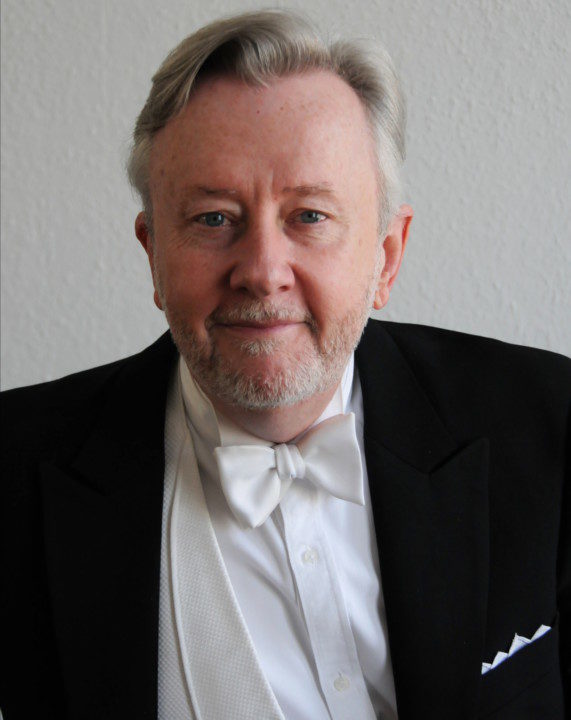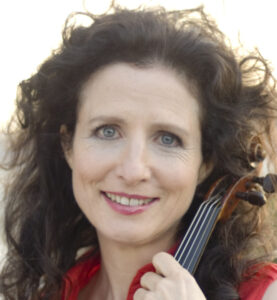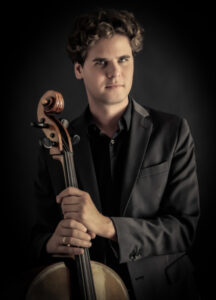
Tucson – In February, the sweeping, evocative music of Mendelssohn and Brahms will fill the music halls at St. Andrew’s Presbyterian and SaddleBrooke. SASO is privileged to welcome three notable guest artists to the stage for this program: celebrated conductor Peter Leonard will take the podium to conduct the orchestra, joined by solo violinist Madeleine Mitchell and solo cellist Theodore Buchholz. The performances will take place Saturday, February 2nd, at DesertView Performing Arts Center in SaddleBrooke, and Sunday, February 3rd, at St. Andrew’s Presbyterian Church in northwest Tucson.

American conductor Peter Leonard holds positions as General Music Director and Chief Conductor of the North German Philharmonic and the Volkstheater Rostock, as well as Principal Conductor of Opera on the James in Virginia. He has also made guest conducting appearances with orchestras and operas around the world, masterfully performing repertoire from Mozart, Wagner, and Verdi to Copland, Crumb, and Zwilich. His expertise at core German repertoire will prove to be especially valuable to his interpretation of Mendelssohn and Brahms with SASO.
On the bill for the performances are Felix Mendelssohn’s Hebrides Overture and Symphony No. 5, and Brahms’ Double Concerto for Violin and Cello, performed by guest soloists Madeleine Mitchell and Theodore Buchholz.
Praised for both her vibrant lyrical intensity and her pioneering creativity, violinist Madeleine Mitchell has performed in some 50 countries as soloist and chamber musician, with a wide repertoire frequently broadcast on television and radio programs including BBC Proms, ABC (Australia), Bayerischer Rundfunk, S4C and Italian TV where she won the Palma d’Oro. Madeleine plays on an 1839 Rocca violin made in Turin.

Theodore Buchholz is the professor of cello at the University of Arizona, where he also serves as String Area Coordinator, String Chamber Music Coordinator, and the Director of the UA String Project. Buchholz has lauded by newspaper critics as a “Virtuosic cellist,” an “Outstanding performer,” and a “Wonderful musician.” He performs on an outstanding cello made in 1877 by French luthier Charles Mennégand.
The Double Concerto for Violin and Cello was Brahms’ last composition for orchestra, and was somewhat of an “olive branch” between estranged friends. In 1887, Brahms broke a seven-year silence between himself and renowned violinist Joseph Joachim to inform him of his plans for a new concerto for violin and cello. The double concerto brought them together again in musical partnership as they collaborated in its composition and performances, and it stands as a historic result of that reconciliation. The concerto is a grand integration of the orchestra and soloists, displays Brahms’ mature compositional style, rich in harmony, lyrical in melody, and full of Romantic-era thematic balance that showcases the talent of the soloists and the color of the orchestra.
Mendelssohn wrote the Hebrides Overture following a journey along the coast of the Scottish Highlands, in which the beautiful landscapes summoned music in the composer’s mind. While traveling, Mendelssohn wrote, “In order to make you understand how extraordinarily the Hebrides affected me, the following came into my mind there,” followed by a sketch of the opening measures of the piece. The Hebrides Overture is a standalone concert overture rather than an opening movement to an introduction to an opera or ballet. The stately subjects, lyrical melodies, and dramatic swells easily call to mind a nautical journey filled with vast landscapes, lonely islands, unpredictable weather, and even “oil and seagulls and dead fish” of which Mendelssohn wrote during his travels.
Mendelssohn’s Symphony No. 5 (Reformation) was written almost concurrently with the Hebrides Overture, and was intended to commemorate the establishment of the Lutheran faith. Listeners may recognize hymns and familiar themes throughout the symphony. The symphony opens with a transposition of the well-known theme from Mozart’s Jupiter Symphony, and the melody of “A Mighty Fortress is Our God” permeates the finale movement.
Performances will be Saturday, February 2nd at 7:30 pm at DesertView Performing Arts Center, 39900 Clubhouse Drive (SaddleBrooke), and Sunday, February 3rd at 3:00 pm at St. Andrew’s Presbyterian Church at 7575 N Paseo del Norte. Tickets for the SaddleBrooke performance are available at tickets.saddlebrooketwo.com, and tickets for the Tucson performance are available at sasomusic.org or by calling 520-308-6226.
